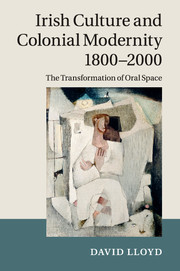Chapter 1 - Irish hunger
the political economy of the potato
Published online by Cambridge University Press: 07 October 2011
Summary
The language used by some writers on the subject of the potato would not be more adequate, if, as Judge Longfield somewhere remarks, potatoes ate men instead of feeding them.
J.E. CairnesI
The story of the Great Hunger or the Irish Famine is all too well known. But even at the risk of redundancy, it is still worth rehearsing what appear, after the upsurge of research of the last decade or so, to be the facts of the case. The Famine, which commenced in 1845 with a failure of the potato crop and recurred over large parts of the country until 1851, was the greatest demographic catastrophe in European history. At least one million people died of starvation and a further million left the country, inaugurating a trend of massive emigration that continued unabated until nearly the end of the last century. The Famine was thus directly responsible for the disappearance of at least one-quarter of the population, estimated in the British census of 1841 at 8.1 million. The vulnerability of the Irish population to such a subsistence crisis was occasioned by the very abundance of the potato, which was capable of remarkable reproduction on poor and marginal land, with the result that a family could subsist for almost the whole year on the yield of a one-acre plot. Dispossessed by settler colonialism of the more fertile lands and driven onto the bogs and mountainsides, the Irish poor had developed what is now understood to be a sophisticated and ecologically inventive means of survival on the basis of the potato crop. They had succeeded time after time in reclaiming marginal land in the most inhospitable regions of the island, especially along the western seaboard. Despite regular but generally short-lived and localized failures of the potato crop, the success of the Irish in cultivating this root had enabled both a high rate of population increase and the progressive subdivision of land-holdings. This system of potato cultivation on small, rented plots, combined with occasional labour on larger farms for low wages or for payment in kind, was known as cottierism.
Several factors contributed to the subdivision of holdings. Principal among these had been the expropriation since the seventeenth century of agricultural land by large landowners who tended, through the medium of the infamous ‘middlemen’, to extract increasingly high rents in a system that became known as ‘rack-renting’. By the mid nineteenth century, the picture of the absentee landlord living in London on rents extracted from an increasingly penurious Irish peasantry was complicated by a new tendency towards ‘improvement’, or the rationalization of agriculture along capitalist lines. Improvement envisaged the consolidation of land-holdings into larger farms on the English model, the concomitant enclosure of all but the most marginal wasteland, the turn to less labour-intensive grain farming and grazing, and the eviction of the small-holding tenants. These landless tenants in turn placed further pressure on the dwindling areas of cultivable land, with the consequence that the highest rural population densities were concentrated on the poorest land. Two further factors facilitated this peculiarity of Irish demographic patterns: first, both the paucity of capital required by the cottier, who needed only to purchase or borrow seed potatoes and a spade to lay down a crop, and the relative ease and informality with which a family holding could be subdivided enabled early marriages and child-bearing. Early marriage and high rates of reproduction were the norm in pre-Famine Ireland to an extent almost unimaginable from the perspective of the highly conservative rural society that rapidly developed after 1850. Second, there persisted, in adapted forms and principally in the more impoverished areas of the western seaboard, an older Gaelic system of communal land-holding known as clachan or rundale. This form of land-holding ensured that most tenants would have access to a variety of land types, from the higher reaches of the mountain where a few sheep might be grazed to the more fertile patches where potatoes or, on occasion, oats could be cultivated. Given the high degree of subdivision, the clachan system came to entail patchwork patterns of land-holding within which pieces of any family’s holdings could be scattered in tiny plots across a neighbourhood without apparent logic and certainly without any attempt at consolidation. The clachan, though confined to certain specific regions of Ireland, came nonetheless – as we will see more fully in the next chapter – to symbolize the irrationality of Irish ways to colonial improvers oblivious to the actual inventiveness and sophistication of its practices.
- Type
- Chapter
- Information
- Irish Culture and Colonial Modernity 1800–2000The Transformation of Oral Space, pp. 19 - 48Publisher: Cambridge University PressPrint publication year: 2011



